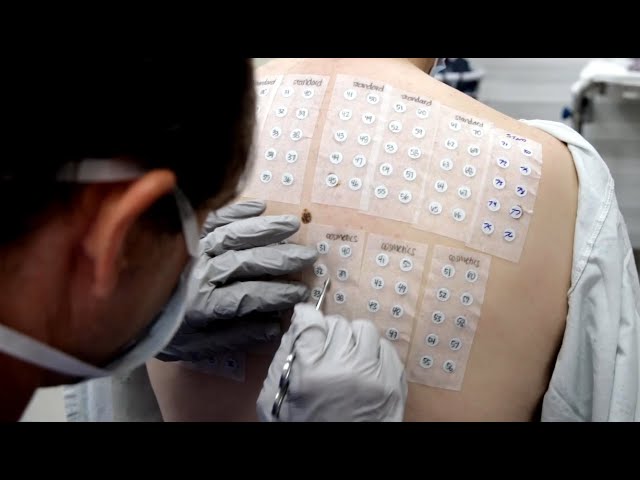Why Patch Tests Are Essential for Allergy Diagnosis and Treatment
Patch Tests: What you Need to Know
Patch testing is a highly effective way to identify skin reactions to different substances. In today’s world, with so many chemicals and products, it is important to determine what is causing any allergic reactions or irritations on your skin. Knowing the cause is the first step towards avoiding it.
Patch testing involves applying small patches of different substances to your skin and evaluating them for reactions. The patches are usually left on for 48 hours to assess delayed reactions. The procedure is commonly used to identify allergy triggers for contact dermatitis, a skin condition characterized by redness, itching, and irritation.
When it comes to patch testing, there are a few things you need to know:
1. Why patch testing is important
Patch testing is important because it helps identify the specific substances that trigger allergic reactions or irritations. Once the triggers are identified, you can avoid exposure to them and manage the symptoms effectively. This is crucial because contact dermatitis can be chronic, with flares occurring repeatedly if the culprits are not avoided.
2. How patch testing is performed
Patch testing is usually performed by a dermatologist or an allergist. A small amount of the suspected substance is applied to the skin, usually on your back, and covered with an adhesive patch. The patches are removed after 48 hours, and a final evaluation is done to check for any delayed reactions.
3. The different substances that can be tested
A wide range of substances can be tested using patch testing. The most commonly tested substances include:
– Fragrances
– Metals
– Rubber
– Preservatives
– Chemicals
However, some substances may be specific to your occupation or hobbies. For example, hairdressers may be exposed to hair dyes or other hair products, and construction workers may be exposed to cement, which can cause skin reactions.
4. Patch testing is not just for people with existing skin conditions
Patch testing is not just for people with skin conditions. If you have had recurring rashes or itchiness without a known cause, patch testing could be an effective way to identify triggers.
5. What to expect after patch testing
It is normal to experience some skin redness, itching, or swelling after patch testing. However, if you experience severe symptoms or blisters, contact your dermatologist immediately. Your dermatologist or allergist will then advise you on the best course of action.
In conclusion, patch testing is a valuable tool in identifying skin irritants and allergens. With the help of a dermatologist or allergist, you can determine the substances that may be causing adverse skin reactions, and take steps to avoid them. By doing so, you can manage the symptoms effectively and maintain healthy skin.
Most searched products:
Does Sephora Support Israel? Answering Your Questions
Discover the Benefits of The Ordinary Botox for Your Skin
How Long Does Glycolic Acid Take to Show Results: Your Ultimate Guide
The Ultimate Guide to Azealic Acid: Benefits, Uses, and Side Effects
The Ultimate Reviews of The Ordinary Peeling Solution
The Ultimate Guide to The Ordinary Colours Foundation: Reviews, Swatches, and Tips
The Perfect Order: When to Use Retinol and Niacinamide in Your Skincare Routine
Find Your Perfect Skin Mate: Tips and Tricks for Flawless Skin
All You Need to Know: Lactic Acid Uses and Benefits
Say Goodbye to Dry Lips with the Best Skin Lip Balms













